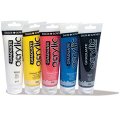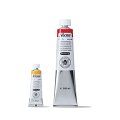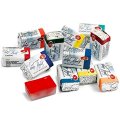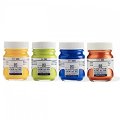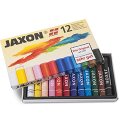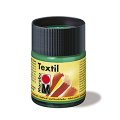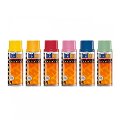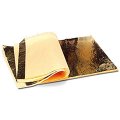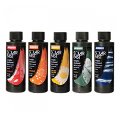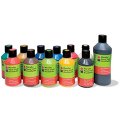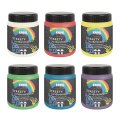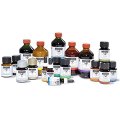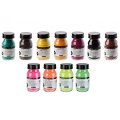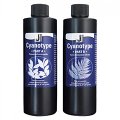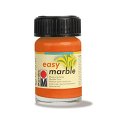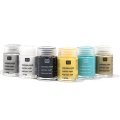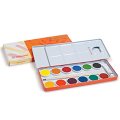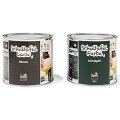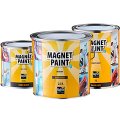Watercolours
Information about watercolours
In watercolour painting (from the Latin aqua "water"), the transparent colours consisting of a binding agent (gum arabic) and colour pigments are diluted with water and applied with a hair brush to (structured) paper, parchment or other materials. In contrast to gouache or tempera, the painting ground shimmers through the colours. Colour mixtures are usually created by painting different transparent layers of colour on top of each other. White is created where the paper base is omitted (i.e. the partially free image carrier is deliberately included in the composition).
Painting with water-soluble paints is one of the oldest painting techniques at all. Even cave painting was created using simple brushes and hematite or charcoal dissolved in water and fat. From Egypt is preserved painted papyrus, and from the Asian region pictures and calligraphy with water-soluble ink. However, these watercolours were mostly "opaque" or were thickened with opaque white paint, for example in medieval mural painting and miniature painting.
Watercolour painting (as a painting technique with translucent colours) has developed since about the 9th century AD. Painters such as Albrecht Dürer or Rembrandt generally used watercolours for preliminary studies - watercolours were not regarded as independent works of art. Only in the 18th/19th century did it gain importance through English painters such as William Turner (or through "open-air painting").
An important basic technique of watercolour painting is glaze. During glazing, the paint, which is heavily diluted with water, is applied to the dry painting surface. The ink dries very quickly due to the thin application and can be overpainted with further layers of paint after drying. If the same hue is always used, darker and lighter areas will be created. The glaze can have both a colour-increasing and a colour-attenuating effect. With different colours, the different glazes create new colour tones. The layers of paint can be applied on top of and next to each other. With the technique of levelling (or washing of lat. lavare "washed out") a colour is increasingly diluted (watered down) with clear water, so that the basic tone loses its intensity and it approaches the colour of the painting ground or merges into the colour (colour levelling). In the wet-on-wet technique, the paint is applied to the damp surface or to a paint that is still damp, so that the colours run into each other.
